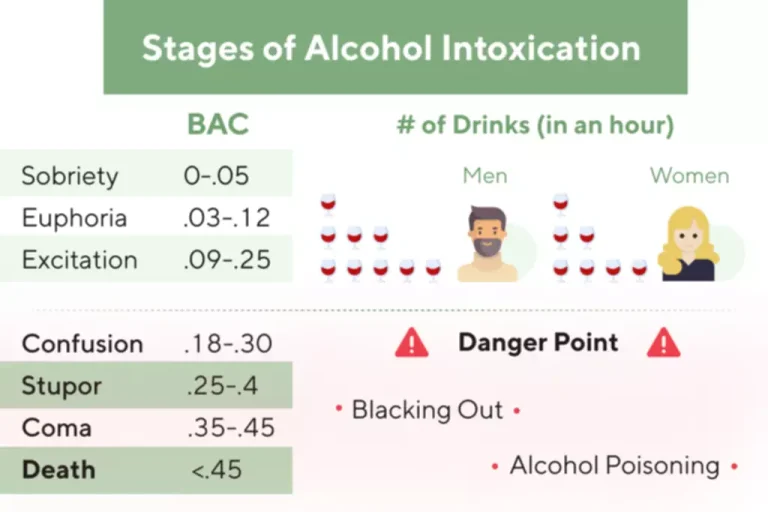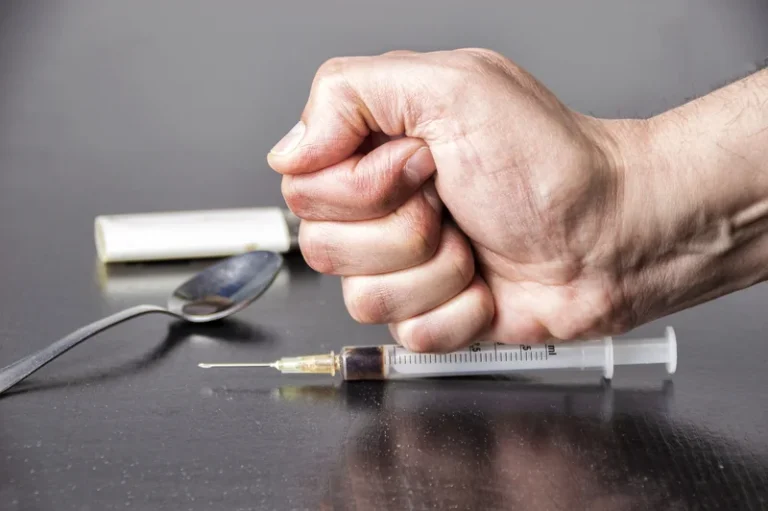
In 2016, over one million drivers were arrested for driving under the influence (DUI). Research shows a significant relationship between alcohol and both the perpetration and victimization of road rage. The American Psychological consequences of driving drunk include: Association (APA) states that people who experience road rage are more likely to misuse alcohol or drugs. Aggression combined with impaired judgment and impulse control can be a recipe for road rage incidents.
Tips for managing road rage
- When asked whether they believed their BAC at the time of their most recent drinking–driving trip was above or below the legal limit, about 10 percent of all age drivers believed they were above the legal limit.
- If you drop the ball with these tactics for any reason (be it laziness, distraction or alcohol intoxication), you will start making more mistakes – any of which could prove to be fatal.
- Finally, fatally injured drivers with BACs of 0.15 percent or higher were much more likely than those with no BAC to be driving from bars (26 percent vs. 0 percent) or from restaurants or other people’s homes (34 percent vs. 22 percent).
- When driving on the road, you need to concentrate by keeping your eyes on the road, reacting to changing road conditions and controlling different aspects of your vehicle.
All treatments were prepared by the nurse away from the participant and investigator. Participants were required to attend a screening visit and three testing visits at Swinburne University of Technology Centre for Human Psychopharmacology in Melbourne, Australia. During the screening visit, participants provided written informed consent before being assessed for eligibility and familiarizing themselves with the procedure. The randomization of the order of treatments for each participant was determined using computer generated and blocked randomization by a disinterested third party and kept on a password-protected spreadsheet that was not accessed by the investigator during data collection.

Reduce Concentration
Each state has its own laws surrounding DWI convictions such as the fines involved, jail time and possible revoked or suspended license. Depending on the legal charges, some states may also require community service time or alcoholism treatment. Drunk drivers face jail time when they’re caught, and the financial impact is devastating.
- BAC is measured with a breathalyzer, a device that measures the amount of alcohol in a driver’s breath, or by a blood test.
- We’ll also delve into the various factors that influence the effects of alcohol, such as weight, gender, and food consumption.
- Alcohol impairs vision, reaction time, coordination, and judgment, all of which are essential to safe driving.
- “Obesity, diabetes, hypertension and high cholesterol all increase the risk for heart attacks, strokes and small stroke dementia,” she said.
- Only 2 percent believed it would be almost certain that all three of these things would happen.
Effectiveness of signs for pedestrian-railroad crossings: Colors, shapes, and messaging strategies
The relationship between alcohol-related harm and social determinants may be bidirectional. For example, alcohol-related harms can contribute to loss of earnings, family disruption, interpersonal violence, mental health issues, and stigmatization, thus shaping social determinants (such as socioeconomic status) and exacerbating inequities. The resultant disadvantage may in turn compromise access to treatment (e.g., owing to cost or availability), heighten risk of co-occurring health problems, and perpetuate cycles of disadvantage (Schmidt et al., 2010). All alcohol-attributable mortality is in principle avoidable and future alcohol policies are likely to be most effective if they take into consideration any differential effect on socioeconomic groups (Probst et al., 2014).


Drinking drivers are less likely to wear safety belts, and the higher the BAC of a fatally injured driver, the less likely he or she was to have been wearing a safety belt. Failure to wear safety belts increases the risk of injury or death in fatal crashes. Fatal crash risk was at least 11 times higher for drivers with BACs of 0.08 percent, the legal limit for intoxication in most States, than for drivers with zero BACs. Fatal crash risk was 52 times higher for male drivers ages 16 to 20 with BACs of 0.08 percent, compared with zero-BAC drivers of the same age.
The results of the repeated-measure ANOVAs for both driving outcomes and subjective ratings of confidence in driving performance across treatments are shown in Table Table11. To meet the target BACs of 0.05% or 0.08% at 45 min post-consumption, participants were administered either 0.6 g/kg or 0.85 g/kg of Absolut vodka (40% alcohol by volume) mixed with 250 ml of orange juice, respectively. Participants were asked to consume their beverage at a steady pace over a 10-min period with a 35-min absorption period following. Participants assigned to the placebo condition were administered a glass of orange juice with vodka rubbed around the rim for the purpose of blinding.
Remember that driving is a privilege that you will lose if you do not do everything possible to minimize the risk of a traffic collision occurring. When alcohol is in your system, it affects how quickly you’re able to respond to different situations. Drinking slows your response time, which can increase the likelihood of an accident. Therefore, if the car in front of you brakes suddenly or a pedestrian crosses the street, it will take longer for your brain to process the situation and prevent an accident. That’s why planning ahead, making personal rules about drinking and driving, knowing your transportation alternatives, and always having a few plan B’s in your mind can help ensure you never get behind the wheel after you’ve been drinking.
- These findings demonstrate that a driver’s perception of the situation may not reflect objective reality.
- Driving with a blood alcohol concentration (BAC) of 0.08 grams of alcohol per deciliter (g/dL) or higher is illegal in all parts of the country.
- The study also found that one-fifth of respondents chose to drink and drive because of internal factors.
- However, among all alcohol-impaired driving fatalities in 2014, 52 percent occurred in rural areas and 47 percent occurred in urban areas.
- The higher the BAC of a driver in a fatal crash, the greater the likelihood that the crash involved only one vehicle.
State Variation in Laws and Policies
- By following the tips mentioned above, you can ensure the safety of yourself, other motorists, and road workers.
- In 2019, 1,775 lives were lost in accidents where a driver’s BAC was under 0.08% (1).
- Other states, however, may completely preempt local control over alcohol availability.22 Another alcohol-specific policy that varies from state to state is responsible beverage service and server training.
- With respect to race and ethnicity, the groups that are consistently reported as having the highest risk of alcohol-impaired driving are American Indian or Alaska Native (AI/AN) and white drivers (Romano et al., 2010).
Another important stakeholder is the department of transportation, which typically has responsibility for implementing drink–driving laws and other policies to improve road safety and health, and which often has expertise in communication to promote behaviour change. If someone drives drunk and survives a crash that injures or kills other people, they must live with the consequences. That emotional burden can be worse than any bodily harm; however, the physical perils of drunk driving are immense too. Impaired driving can cause accidents that lead to paralysis, disfigurement, brain damage, and death. Deaths and injuries are the most severe outcomes of drinking and driving, but these aren’t the only potential consequences.

Impaired vision can affect how you judge the distance between your car and other vehicles on the road. Additionally, fewer objects may be visible within your peripheral vision, or what you can see to either side of you when looking straight ahead. For example, out of any U.S. state, Montana has the highest percentage of rural residents.
It specifically focused on alcohol doses equal to commonly enforced legal BAC limits (i.e. 0.05% and 0.08%). Drivers who are between the ages of 16 and 20 years old are 10 times more likely to be involved in a fatal crash, than drivers over the age of 21. While the number of underage drinking and driving cases has significantly decreased, many communities are pushing out new initiatives to keep adolescents safe. In 2011 alone, close to one million high school teens admitted to drinking and driving. Research has long indicated that raising the minimum legal drinking age (MLDA) to 21 has reduced alcohol-related crashes among drivers under 21 (Shults et al. 2001). This study raises the possibility that delaying underage drinking may reduce alcohol-related crash involvement among adults as well (Hingson et al. 2002).